Episodes
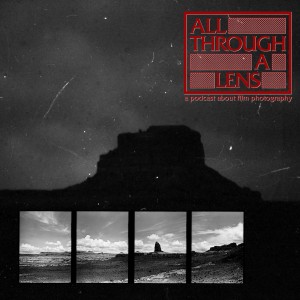
Tuesday May 26, 2020
Episode 19: Those Beautiful Moments In Between (with David Chao)
Tuesday May 26, 2020
Tuesday May 26, 2020
This is an episode full of questions! We’ve got answers! Have you ever wondered how labs develop black & white film? Do your photos tell a story? We’ve also got an interview with David Chao, a zine review and some news!
Answering MachineDo you feel that your photos or a selection of your photos tell a larger story?
It was an odd question this week. Did it break Eric? It probably did. But we had an array of answers and some fun discussion.
Hello, DavidOur interview this episode is with David Chao. David grew up between San Francisco and Osaka, Japan. The way he captures the story of a people and their culture is something a bit different than we’ve seen before. While his individual photos may be striking, his series and collections are what create his powerful narrative.
@davidchao.film on IGdavidchaophotography.com
Here are a few of his photos:
How Do Labs Process Black & White Film?But when a photographer drops their film off at a lab, all of those choices are left to the lab. Now, granted, these folks are professionals, often with decades of experience. They’ve honed their craft from an art to a science and back again.
Still, we’ve always wondered what happens when you drop black & white film off at a lab. We’ve both done it before, and both had no idea what goes on behind the scenes. We just dropped off the rolls and picked them up a few days later. They looked great and we didn’t really question why.
But now we are. Why? Why do they look so good? It’s a question that’s always been in my head. So we reached out to about a dozen labs – and a HUGE thanks to the five that responded.
We asked them two questions. First:Do you have a specific developer that you use or each common emulsion?
And second:What is the practice for when a customer brings you a roll of some mysterious black & white emulsion? For example, some oddball low ISO Soviet film.
We talked with five different labs:Panda Lab – @pandalabseattleCafe Obscura – @cafeobscurasudburyRoberts Camera – @robertscameraIconLA – @iconlaBlue Moon Camera – @bluemooncamera
Each answered these two questions in some really interesting and unique ways.
Zine Review
This is a halfsize, landscape zine, 32 pages, color and b&w. As the name highly suggests, this was taken on a roadtrip from New York to Charleston, South Carolina, though he dips down into Savannah.
The photos are mostly empty, which is right in my wheelhouse. This is what I like to shoot, and this is what I like to see. The B&W shots, mostly on HP5, live up to all the praise of that emulsion. Even the Fomapan looks wonderful (something I really can’t make happen).
Daniel recently reprinted this issue, and it’s available on his website – danielnovakphoto.com for $8.
The Slow Meow ZineOur first rebranded film was dubbed the Slow Meow (it was Tasma Mikrat 200). It was neat to see how many of you used the hashtag and shared their results on IG.
So we’ve been talking about this. While this is *our* podcast, we really like to open it up to the community. And because of that, we’d like to make a community zine. And since so many of you shot with the Slow Meow, we’d like to make a zine of a selection of those photos.
So if you got the film, we’d like you to submit six of your favorite Slow Meow photos
We’re going to compile a zine together with everyone who has shot with it. Everyone who appears in the zine will receive a free copy (you can always buy more copies). The rest will be sold and traded like any other zine.
Criteria:Size of image: at least 3600 x 2400(ish) at 300dpiCut off date: July 30Submit via Email only: allthroughalens.podcast@gmail.comInfo needed: Name; IG/Twitter handle; Camera used; Mailing address
—
Be sure to check out our Dev Party episodes. They’re about to get even more pee-inducing!
Music by Last Regiment of Syncopated Drummers
Vania: IG, Flickr, ZinesEric: IG, Flickr, Zines, ECN-2 Kits
All Through a Lens: IG, Website
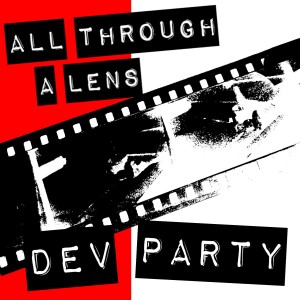
Tuesday May 19, 2020
Dev Party #11: Fire Party!
Tuesday May 19, 2020
Tuesday May 19, 2020
This week on Dev Party we’re trying a new-to-us developer! Well… that’s not quite true. You’ll see.
It was Vania’s idea to give Pyro a try, so we both picked up PMK Pyro by Photographer’s Formulary. And well… you’ll see.
Here on Dev Party, we are certainly used to and even welcoming of failures. They can lead to more knowledge and better days. And this failure is no different. It was just weird and unexpected. Again, you’ll see.
This was the first time we ever tried this developer. You’ll hear us reading from the instructions, talking a bit about what Pyro is, and witness our first experiences with the developers. Basically.
The important thing is that we both liked the results.
And speaking of results, here are some scans…
We also hear from Aloy Anderson and Jennifer Froula Webber about their thoughts and tips for shooting Fuzzy Pürrito!
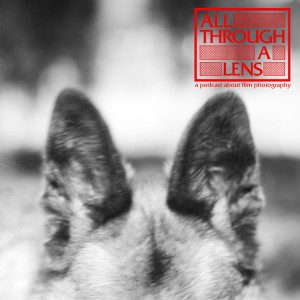
Tuesday May 12, 2020
Episode 18: This is Pure Record, Not Propaganda (with Kat Swansey)
Tuesday May 12, 2020
Tuesday May 12, 2020
On this episode, we talk a new old emulsion, we ask (and hear) about your first film camera, we dig into a few Depression Era photographers, have some more good news, and give a call to Texas photographer Kat Swansey.
The New Old Emulsion: Fuzzy Pürrito!
Get It Here!
Following up fast on the heels of The Slow Meow, we’ve got another limited run of new old emulsion. This time it’s a rebranding of Svema MZ-3, another Soviet-era film that’s been kicking around for a few years.
If you want dreamy and soft photos with quite a bit of haloing in the highlights, Fuzzy Pürrito – FuzzPürr for short – is the emulsion for you!
Our batch of this emulsion shoots at 12iso. This might seem a little limiting, but on a Sunny 16 sort of day, you’d shoot this at 1/100th of a second with an aperture of f/5.6 – three stops slower than 100iso. So give it a shot – push yourself to try something new. We’re offering a 3 pack for a pretty affordable price.
And developing it is pretty easy too, but you’ll need HC-110. For the FuzzPurr, you’ll have to use Dilution H (1+62). Do this with normal agitation for 9 minutes and you’re good. This doesn’t do well in stand development. It might be tempting, but you’ll definitely get better results with this formula. And of course, it fixes as normal.
We have three-packs of this film for sale on Eric’s etsy store for $18. Each roll has at least 24 frames on it, though the way that Eric rolls, you’re more likely to get 30. And at $6 a roll, that isn’t too bad. You’ll also get a few stickers, postcards, and an All Through a Lens button.
Here are some sample shots:
Firsties!
Vania’s first film camera (destroyed by a fall from a horse).
For our answering machine question, we asked:What was your first film camera?
And we got a ton of replies!
Hello, Kat!For our interview, we give a call to Kat Swansey. She grew up in a small Texas town outside of Houston, but now calls Austin home. With her 35mm Canon, she explores her smalltown roots, capturing them in vivid color.
And here are a few more:
Depression-Era FSA Photography
We dig into the early FSA photographers and discuss a few of their photos.
The early days of the project brought together Dorothea Lange (who ran a very successful portrait studio in San Francisco), Arthur Rothstein (president of the Columbia University photography club, and star pupil of Stryker’s – at first he was just used to set up the darkroom, but he eventually picked up a camera), Walker Evans (a well-known documentary photographer and pal of Earnest Hemmingway), as well as Carl Mydans (a photojournalist for the Boston Globe) and Ben Shahn (Evan’s former roommate and a well-known painter – Evans was really pulling for him).
Here are the ones we cover:
Dorothea Lange – Toward Los Angeles, California Arthur Rothstein – Heavy black clouds of dust rising over the Texas Panhandle, Texas Walker Evans – Floyd Burroughs, Alabama Sharecropper Carl Mydans – “Damned if we’ll work for what they pay folks hereabouts.” Crittenden County, Arkansas. Cotton workers on the road, carrying all they possess in the world. Ben Shahn – Watching Football Game, Star City, West Virginia.
Much more information and many many more photos can be found here:
https://www.loc.gov/pictures/collection/fsa/
Overview:https://www.loc.gov/pictures/collection/fsa/documentingamerica.htmlhttps://www.loc.gov/pictures/collection/fsa/background.html
The photographers:https://www.loc.gov/pictures/collection/fsa/sampler.html
Most popular photographs:https://www.loc.gov/pictures/collection/fsa/requests.html
More Good NewsWe finish off the episode with more good news from listeners! Thank you so much!
And that’s the show!
Be sure to check out our Dev Party episodes. They’re about to get even more pee-inducing!
Music by Last Regiment of Syncopated Drummers
Vania: IG, Flickr, ZinesEric: IG, Flickr, Zines, ECN-2 Kits
All Through a Lens: IG, Website

Tuesday May 05, 2020
Dev Party #10 - Dev Party of Four (by Five)
Tuesday May 05, 2020
Tuesday May 05, 2020
We are twinning today! On this episode, we both shot on Ilford HP5+, we’re both devving in Rodinal, and we both try to talk you in and out of making the switch to large format.
Not exactly offering helpful advice, we wander through the ways that large format is different from the smaller formats. For instance: it’s larger.
Basically, large format is a new hobby. But it’s a new hobby where you can take much of what you know and a little bit of what you already own.
We don’t get into lenses though. It’s already confusing enough without us mucking it up more. Intrepid Camera did a fine write up on that.
Vania: IG, Flickr, ZinesEric: IG, Flickr, Zines
All Through a Lens: IG, Website

Tuesday Apr 28, 2020
Episode 17: The Ducks or Our Lives
Tuesday Apr 28, 2020
Tuesday Apr 28, 2020
On today’s episode Spring is in the air! We’re walking around our neighborhoods like Fred Herzog, we’re cleaning our springs like it’s spring cleaning, and we’re finding zines that we should have reviewed months ago. We’re doing a lot of things, okay? We’re also giving a call to Jana Obscura!
After Eric and Vania check in on each other, they check the answering machine for some good news.
For this episode there wasn’t a question – there was just a plea: Tell us your good (film photography related) news. The calls came in and we were of good cheer!
Walkin’ Talkin’ Fred Herzog!More and more we’re picking out a photographer for a bit of inspiration. This episode, we look at a few Kodachrome photos taken by Fred Herzog in Vancouver. He had been shooting since the 50s, but got his first show in 2007.
Since many of us have been only getting out of the house for walks, we thought it would be a fine time to take a look at a photographer who was mostly known for just that. Fred Herzog from Vancouver, British Columbia, would take nearly the same route through the city every day.
Through much of the 1950s and 60s Herzog tramped the streets after work and on weekends with a Kodak Retina on his hip. He had been given a large format plate camera when he was young, but tossed it for the small 35mm.
The body of work he produced is extraordinary. At this point in photographic history, color was seen as sort of cheap and gimmicky. Fine art photographers as well as street photographers used black & white almost exclusively. Despite the tradition, Herzog fell in love with color. And not just any color, but the uncanny, vivid tones of Kodak’s Kodachrome.
His photo “Paris Cafe” from 1959 features a man looking out of a cafe window. He’s framed by Christmas decorations and menus. Of this, Herzog later said, “The man in that picture looks somewhat disengaged, but I like the Santa Clauses and I like the price list of food.”
This is a simple enough explanation. He likes these things. But he went on: “The whole atmosphere is somewhat in contradiction with the high-flying name Paris Café. And I like that kind of inherent contradiction in many of my pictures. Every picture, I’ve sometimes said, has a curve ball in it. They’re not just pictures of pretty scenes. They’re pictures that have a curve ball in them which makes you think.”
You can find more of his work here.We also suggest the book Modern Color, which you can find here.
Let’s Call Jana!
Jana Obscura (@jana_obscura on IG) grew up in Honolulu and now lives in Seattle, and shoots a ridiculous array of cameras, and is mostly known for her instant and pinhole work. She’s also bok-choy’s biggest fan.
We talk to her about her cameras, her walks around Seattle, laundromats, how she’s dealing with the whole plague days thing, and plans for a possible zine.
Here are a few photos by Jana:
Spring Freakin Cleaning!
It’s technically spring and usually that means cleaning up the cobwebs, tossing and donating things you don’t use anymore and just giving your home a solid deep clean and maybe sanitizing in the more recent times.
We thought it would be fun to talk about this whole spring cleaning jazz and how it pertains to photography. We’ll talking not just cleaning, but exercising your cameras. But we’ll also talk about storing your gear and maybe talk you into getting rid of stuff you no longer use. Oh, and we ramble on a bit about film.
We mentioned a page written by a fellow with a lot of love for camera storage. Here it is.
Zine Reviews
Vania reviewed O’ahu by Dave Brotchie – a half size 54 page black and white semi glossy zine. This is a collection of images he took from the 8 years he called Hawaii home.
Dave expresses how much he misses living on this wonderful island and plans to make it back someday.
You can get a copy via @aloha_dave on Instagram
Meanwhile, Eric reviewed Sam Warner’s Finding the Grain. It’s a glossy 8×8 b&w zine of some really lovely shots. With each, he gives a bit of the story behind the photo, as well as the camera, emulsion and developer he used to bring it into life. These are mostly 35mm, though he’s got a shot with the Pho-Tak Traveler 120.
His choice in subjects is as varied as his choice of film and cameras, and I find this to be a really good thing. With this, you’ve got yourself a very diverse zine. There’s street, architecture, some wildlife and even macro – lots of flowers, which makes Vania really happy (she’s got a thing for men taking photos of flowers).
You can pick it up from Sam on IG: @unrecoveringphotographyaddictSam’s website: https://www.theunrecoveringphotographyaddict.com/
And we’ll see you next week!
And that’s the show!
Be sure to check out our Dev Party episodes. They’re about to get even more pee-inducing!
Music by Last Regiment of Syncopated Drummers
Vania: IG, Flickr, ZinesEric: IG, Flickr, Zines
All Through a Lens: IG, Website

Tuesday Apr 21, 2020
Dev Party #9 – Dev Party Out of Bounds
Tuesday Apr 21, 2020
Tuesday Apr 21, 2020
We’re doing something a bit different this session of Dev Party – we’re stand developing color! What’s that, you say? Is that even a thing? Well it is. Sort of.
First, stand developing usually (always?) means diluted developer and longer times with zero-ish agitation. For instance, a lot of folks stand develop with Rodinal, mixing it 1+100 and letting the film stand in it for an hour.
This isn’t what we’re doing here. And yet, it’s called Color Stand Developing for some reason.
In this episode, Vania “stand” develops a color roll in C-41, while Eric does one in ECN-2 (the developer used for motion picture film).
In both cases, the used the regular dilution at 68F (20C). After pouring it into the tank, we agitated for a minute then let it stand for 45mins (rather than an hour). This was based on what most folks seemed to do.
When it came to Bleach/Fix/Blix, many people were doing them at around 45 minutes each. After digging into the science of it, we decided that it was unnecessary. Vania Blixed for the typically-recommended amount of time, and Eric did the same for the Bleach and Fixer.
But how did it all turn out?
While Vania liked her results, Eric was a bit unimpressed.
For him, this was part of a larger test to see how Fuji Color 200 would react to normal and stand development at various ISOs. He shot identical scenes in two rolls, metering for 25ISO up to 1600ISO. The results between the regular and stand aren’t incredibly surprising. The surprise came from just how well you can pull C200!
Take a look:
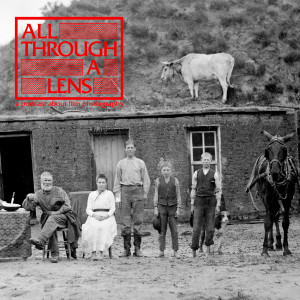
Tuesday Apr 14, 2020
Episode 16: Hey, Let's Put a Cow on the Roof!
Tuesday Apr 14, 2020
Tuesday Apr 14, 2020
On this episode, we’re going to talk about daydreaming and dreaming of days. We’ve got a segment on Seattle FilmWorks – what is it? What was it? Can you shoot it? And speaking of Nebraska, we’re checking in with Solomon D. Butcher, a photographer from the late 1800s.
But first, Eric mourns the loss of his fuzzy friend, Juniper Purrito. If you follow him on Instagram, you know how enormous of a role she played in his life. If you’ve ever received a zine, film or developer from him, you’ve seen her logo – it’s on everything. The cat with the antlers – that’s Juniper.
With tears wiped away for now, we continue.
First with the answering machine. The question we asked listeners this episode was:When it comes to photography do you daydream about it? What specifically?
Because of the messages left, we’ve expanded our definition of “daydreaming” and we really like that. Vania and Eric answer with their own, of course. Vania is the winner, the winner of daydreaming. If you know her, this just makes sense.
Seattle FilmWorksIf you’ve poked around on Ebay for expired film, you’ve probably come across a few rolls of Seattle FilmWorks. Maybe you’ve even heard that it couldn’t be developed in normal chemicals. Maybe you even bought some, shot it, only to discover that your lab wouldn’t touch it.
If you looked at the cartridge, the developing instructions read only “Process SFW-XL”. Just what did that mean? What is the SFW-XL Process? And what is this weird and mysterious emulsion of old, and why is everyone so afraid of it? This is a strange little tale, so sit tight and we’ll tell you.
The story of most film companies is pretty boring. Like any manufacturing business, they produce a product, sell it, then grow or shrink upon the demand. There’s honestly not much drama to tell when it comes to Kodak, Fuji or even Agfa.
However, Seattle FilmWorks is a completely different sort of story. This is a story of a company killed by both honesty and dishonesty, by free film and the digital age.
Shoot Inside Challenge ThingLast episode, we challenged listeners (and ourselves) to shoot something inside. The rules were (and still are) six objects together, natural lighting, on film.
This is what Vania came up with:
And how Eric did:
Solomon D. ButcherSince the influx of zines is un-influxing at the moment, we turn to a photobook filled with the work of late 1800s Nebraska photographer Solomon D. Butcher.
His work was weird – even for Nebraska. Here are a few examples:
We talk about the book, his life, and how he set up his odd family portraits.
And that’s the show!
Be sure to check out our Dev Party episodes. They’re about to get even more pee-inducing!
Music by Last Regiment of Syncopated Drummers
Vania: IG, Flickr, ZinesEric: IG, Flickr, Zines
All Through a Lens: IG, Website
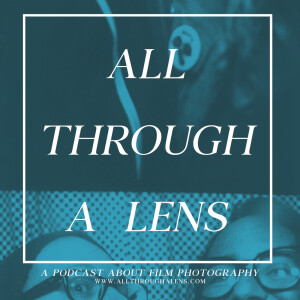
Tuesday Apr 07, 2020
Dev Party #8: We're Gonna Have an FP Party Tonight! Alright!
Tuesday Apr 07, 2020
Tuesday Apr 07, 2020
Let’s talk about Ilford’s FP4+! But let’s not just talk about it, let’s shoot and develop it!
This is a pretty laid back party, but sometimes parties have to be a bit laid back.
Vania: IG, Flickr, ZinesEric: IG, Flickr, Zines
All Through a Lens: IG, Website
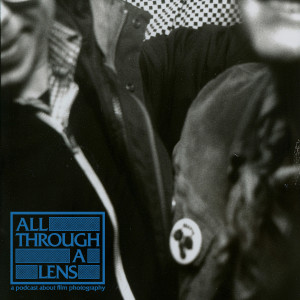
Tuesday Mar 31, 2020
Episode 15: Make Me A Sandwich
Tuesday Mar 31, 2020
Tuesday Mar 31, 2020
Everyone is locked up in their houses now or something, and what choice do we have? So we’ll talk about social distancing and creativity – Creative Social Distancing? – we’ll give a call to Ethan from Cameradactyle, talk about wire photos and what they have to do with a James Stewart movie, and zine reviews.
After a sort of meandering wellness check (including a talk about an exhibition Vania’s in), we hit the answering machine!
I Hate Your Answering MachineWe asked listeners to call in and tell us how social distancing has effected their creativity.
The array of answers was encouraging. Despite being closed in and often separated from friends and photolabs, our listeners have got their collective shit together.
Some are building darkrooms, one is building a camera out of his bedroom (like the entire room), another is perfecting old and forgotten color chemistry, some are still working in the healthcare field and use photography to keep them going.
Lots of people are being creative in lots of ways. But it’s also important to remember that we don’t need to be creative now. It’s okay to not be. It’s okay to not be able to be.
Shoot Inside Challenge ThingThat said, we’re offering a way for you to stay creative if you want to – and to do it indoors.
For those who like challenges and being tasked with things, we’ve got the Shoot Inside Challenge Thing for you! Each episode as this whole virus thing blows over, we’ll give you a challenge. This isn’t a contest. There’s no winners. But we will judge you silently.
See what you can come up with. Then after you dev the shots, tag us and we’ll feature them. #allthroughalensathome
For this episode, let’s try…-Natural light – pick five random things from your house and take a still life with them interacting in natural light. Points for absurdity.
InterviewOn this episode, we checked in with Ethan from Cameradactyl. We talk about 3D printing medical parts, new cameras, new camera ideas and the movie Call Northside 777.
There’s a lot going on in his shop these days, and we talk about a good fair amount of it.
Sending Photos By Wire
Inspired by the Jimmy Stewart movie Call Northside 777 (1948), we dig into the history of the wirephoto – actual photographs sent over telephone wires long before the internet.
We explore the early attempts at this, starting with etchings encoded and sent via telegraphs. But soon we’re mentioning names like Arthur Korn and Édouard Belin. And when Western Union, AT&T and the Associate Press get into the game, all bets are off!
Here’s a quick rundown on how all of this worked:After the print was ready, it would be attached to a cylinder on the transmitter. This cylinder would spin 100rpm under a more modern photocell. A small lamp would shine a very small light onto the print, which would be reflected back onto the photocell. The cell, as before, would turn the array of gray tones into signals that could be transmitted across telephone wires to a receiver.
This receiver held a piece of photopaper on its cylinder. As it spun at 100rpm, the signals coming across the wire would be translated back into light. The varying lights and darks were exposed to photopaper making a positive print. Reproducing the entire photo took around 10 to 17 minutes.
By the end of the decade, these transmitters were made small and basically portable, fitting in a large suitcase. All that had to be done was to tap into an existing phone line and send the photo to a receiver near a darkroom.
The wreckage of a small plane lies in a wooded area near Morehousville, N.Y., Dec. 31, 1934 after a crash landing three days earlier. The four people aboard were reportedly not seriously injured. This photo is believed to be the first photo transmitted to Associated Press members on the AP wirephoto network, Jan. 1, 1935. (AP Photo)Zine Reviews
Before going into the zine reviews, we talk about our quick adventure to Polacon San Francisco!
But then we get into the zine reviews, hitting two zines that we picked up that weekend. We review Big Shot Portraits by Jaya Bhat and Before My Eyes compilation zine, which you can get here (probably).
Kenny RogersWe lost Kenny Rogers recently, who also happened to be a large format photographer. Here’s the original article about his photography that everyone keeps referencing and not linking back to.
Rogers started as a kid with a Kodak Brownie Hawkeye and eventually traded up to a Hasselblad. He got really serious about it when he picked up a Linhof Master Technika 4×5. He published a book of landscapes and then moved onto 8×10, he shot portraits with that mostly, publishing two additional books from those.
And that’s the show!
Be sure to check out our Dev Party episodes. They’re about to get even more pee-inducing!
Music by Last Regiment of Syncopated Drummers
Vania: IG, Flickr, ZinesEric: IG, Flickr, Zines
All Through a Lens: IG, Website

Monday Mar 23, 2020
Dev Party #7: Dev Party For Your Right to Fight
Monday Mar 23, 2020
Monday Mar 23, 2020
Well that escalated quickly. We went from “hey there’s this weird flu thing” to “nobody leave their damn houses ever” in like a week (basically).
So we’ve decided to back up a bit and give folks who have never developed film before a somewhat wordy overview on how to do it, and what specifically to buy.
We’ll not bother with the entire run down here in the show notes, but here our list of things:
–Changing Bag (large) $24–Leader Retriever$10-Scissors (steal yer mom’s)–Developing Tank and Reels $35.00
–Kodak HC-110 $15–Agfa Rodinal $13–Ilford Rapid Fix $13
–Graduated Pitcher $11.00–Thermometer (get two) $4
–Decanter (literally any 1l bottle will work) $6.00-Timer (any digital kitchen timer – or phone, etc)
-Bucket for washing (optional)–Arista Flow (optionalish) $8
-Hanger and Clips (use coat hanger and medium binder clips)-Weight on the bottom (use a big ass binder clip)Or these:–Stainless Steel Clips $4–Arista Stainless Steel Clips $7
–Kimwipes (optional) $4
–Printfile Sleeves $7
Massive Development Chart
Here are a couple of photos Eric developed this episode:
And here are a couple from Vania:
Vania: IG, Flickr, ZinesEric: IG, Flickr, Zines
All Through a Lens: IG, Website




